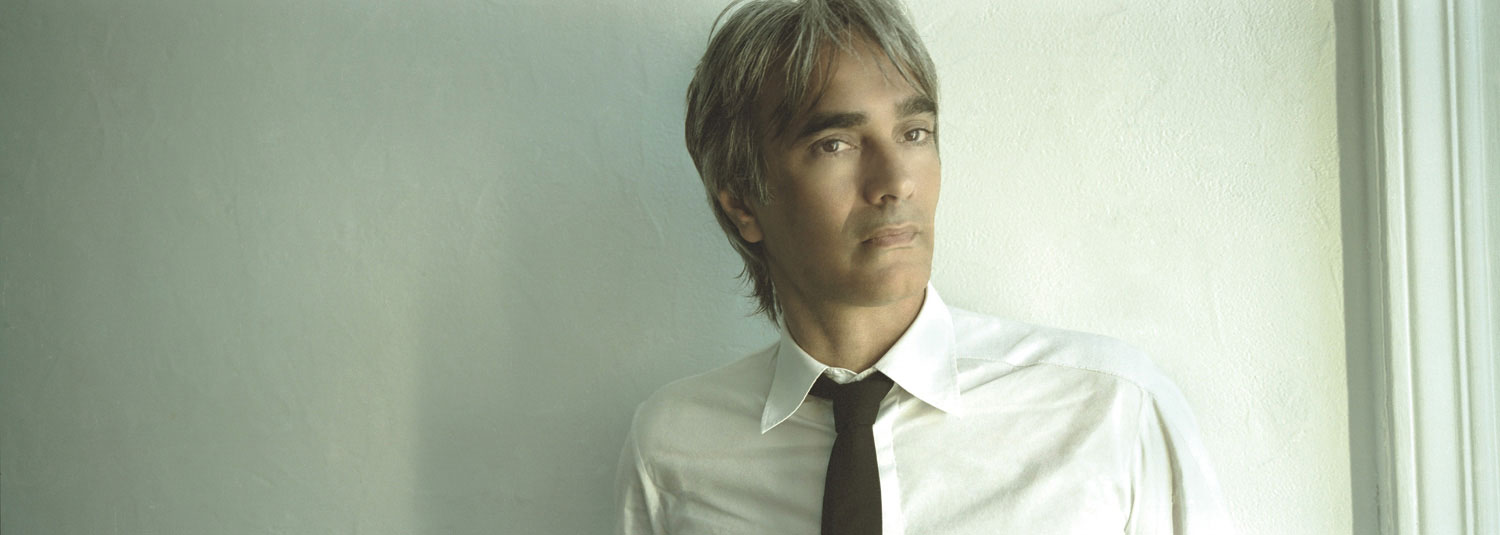
Hello Leonardo Marcos, nice to see you again! I understand that this is not your first collaboration with Crédit Agricole CIB?
We've worked together on a number of artistic projects, including an event at the Palais de Tokyo, where I designed a set of animated visual poems to mark Crédit Agricole CIB's move. The project subsequently became an installation at their new head office. It was a first in terms of making possible an in situ, permanent digital work; an NFT before its time, and above all before it became fashionable. That's why I enjoy working with Crédit Agricole CIB and its teams so much, especially Anne Robert, who is always one step ahead, with a highly innovative vision that stimulates my creations.
You're an artist who uses the potential of digital art. What drives you in this dialogue between 'old' and 'new' art?
Strangely enough, I draw more on classical art than contemporary art. I believe in passing on the great masters and what they have given us. But that doesn't mean I shouldn't be interested in new technologies. You have to be innovative in your creations. I like the harmony between an aesthetic derived from classical art and the invention of new formats.
Your work often features music. Tell us about this link between images and sound.
My art is multidisciplinary, with music playing a major role. I started my artistic career with music when I was very young, meeting Gainsbourg, then Freddy Hausser, producer and director of films about the Rolling Stones, who got me into television, and above all Guy Peellaert, the Pop Art artist famous for his cover of Bowie's Diamond Dogs, with whom I had my first exhibition. Also, when I met Philippe Constantin, president of Barclay, I'd forgotten to bring my tracks, so I showed him my photos and art films. I signed to his label because he liked my approach as a young student, whose creations were part of a total art. I'd like to say that my images are musical and my music visual.
Michelin-starred chef Akrame Benallal's motto is "to make the ephemeral unforgettable". What will tonight's audience remember?
I hope they will remember Ravel's timeless and futuristic potential. Like David Bowie, for me he is the most visionary composer of the 20th and 21st centuries.
Why did you choose Ravel's Bolero?
I have a special relationship with Ravel. My father was a piano builder, and when I was a child he used to take me to listen to Henriette Faure's lessons for concert performers at her home, as she was Ravel's pupil. She used to say that he was very elegant, always well dressed, in beautiful suits, and fond of beautiful things. That inspired me too... Maybe that's why I've always liked wearing suits. And coming from a Spanish family, the Bolero was music that spoke to me.
In preparation for this evening, we were talking about Ravel's cabinet of curiosities, with all those little objects from all over the world, like a patchwork quilt in a big bonbonnière. What would we find in yours?
I also have a cabinet of curiosities in my artist's house, including some very rare manga dolls from Japan, a bust of Alexander the Great, some very large playmobils, a silver statuette from the 1920s of a child playing with a hoop, and some works that are precious to me, such as a first original edition of poems by Verlaine and a paper copy of Interview magazine, handmade by Warhol.
What does Leonardo Marcos' ideal playlist (classical and jazz) look like?
- Chopin's Preludes, by Alfred Cortot
I remember that Gainsbourg and I often spoke passionately about Chopin's preludes. He wrote most of them in Majorca. I love this island, especially its most isolated spots like Deià. I took photos in the Balearic Islands, but also just across from Ibiza, where my mother's family comes from. I love the phrase that Cortot used when talking about this composer to his students: "You have to play Chopin, not the piano".
- Chopin's Nocturnes, by Arthur Rubinstein
The absolute genius of Chopin's interpreters.
- Bach's Well-Tempered Clavier, by Glenn Gould
Another performer of genius, but this time Bach. The greatest of all composers.
- Ravel's Miroirs, by Henriette Faure
This is an emotional choice, linked to my childhood, when Henriette Faure played Ravel and I listened to him with my father in his living room. My Proust's madeleine.
- Ravel's Concerto for the Left Hand, by Samson François
This concerto is a voyage through time, the world and the stars, and Samson François imbues it with his decadent dandy style, all in 'drunkenness'.
- Ravel's Piano Concerto in G major (Adagio assai), by Krystian Zimerman
The Adagio is a gem, and Zimerman is the perfect interpreter of this music.
- Couperin's Leçons de ténèbres, by William Christie & Les Arts Florissants
I dream of staging the original ritual performed on stage, where candles were blown out until the auditorium was plunged into darkness.
- Falla's L'Amour sorcier, conducted by Rafael Frühbeck de Burgos
This was the first record I heard as a child. This music scared me to death. Carlos Saura's film was a perfect tribute to it and to its choreographer, the dancer Antonio Gades, who is the greatest in flamenco. When I was very young, I saw him on stage in Lorca's Blood Wedding and it moved me.
- Schoenberg's Transfigured Night, conducted by Pierre Boulez
This musical composition sometimes accompanied Dreyer's film Vampyr. It is a stunning work, disturbing in its darkness: a metaphor for the grip of love.
- Mahler's Fifth Symphony, conducted by Bruno Walter
Walter knew Mahler, and he was by far the best conductor of his master's music. Here we find Vienna, but also a bucolic dimension of the Austrian countryside.